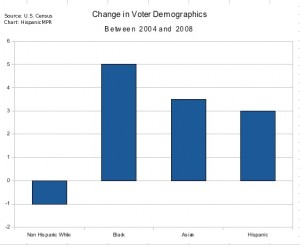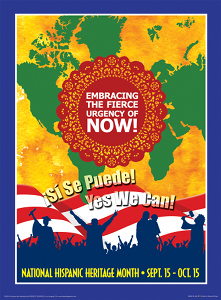Posted by Elena del Valle on August 26, 2009

Wedding bands
Photo: Webphotomart.com
Over time just over half of the United States residents gets married. In the last decade the number of people who never wed dropped from a third to slightly more than a quarter. What, if any, impact does the recession have on lovebirds wishing to get hitched?
Most couples marry between the ages of 18 and 29 although they generally have not reached their peak salaries. Perhaps that is why it is common for parents to provide financial support for young couples’ wedding events and honeymoon travel. Looking at all newly married couples the average income is $55,000 according to wedding industry data gatherers. At the same time, the median wedding in past years cost $28,000. It seems likely some couples are spending much more than others, and also that the recession is denting the depth and breath of wedding plans for many of the five million people that will likely be seeking wedded bliss this year.
According to sellmoreweddings.com, the average wedding budget is $20,000 but the median cost is $28,000. Not surprisingly, couples marrying in major metropolitan areas such as Boston, Chicago or New York City pay more to say I do.
In the United States June is the most popular moth to marry, followed by August, September and October. In past years, there were 175 invited guests on average per wedding. Since only about half of couples rely on wedding planners we may be able to conclude that the remaining couples manage the event on their own or with the help of friends and relatives. When money is tight, like now, fewer couples take advantage of consultants.
According to sellmoreweddings.com, couples are waiting longer to get married so the engagement period may be longer. According to a recent Mintel focus group presentation and video, most of their focus group participants were making their own plans in an effort to save money and be creative; some were using consultants but only in a limited capacity. The findings are based on qualitative focus group research by Mintel, a supplier of consumer, media and market research, from April-May 2009.
“Seven out of 10 couples we talked to are planning their weddings with cautionary measures due to the economy,” said Kat Fay, senior analyst at Mintel. “However, despite revised plans and cutbacks, couples still feel certain their wedding days will be memorable without portraying a sense of being scaled down.”
Mintel researchers found couples are eager to economize by holding the gathering at a more modest place and with more affordable options than they would like. They emphasized savings on items like flowers, food and liquor, while seeking the best enjoyment and comfort of their guests. Some respondents also reduced the number of guests invited while still including close family and friends.
Although they consider honeymoons important they look closely at costs and ways of keeping them down by choosing nearer destinations that are affordable. While brides still place much value on their dress they seek affordable options and dresses on sale. They still allocate funds to beauty salon help with hair and makeup so the wedding pictures come out nice.
What about the ring? Rings are considered non negotiable by many focus group respondents. According to TheWeddingReport.com, in 2008, couples were expected to spend $6.1 billion on engagement rings in the United States. They were expected to shell out $2 billion more on wedding rings for brides and grooms. The same report indicates couples’ favorite month to become engaged is December, and Saturday is the most popular day to ask the question.
The result so far is an increase in informal and intimate events, even humor, among those willing to discuss their weddings. And, social networking sites were identified as a growing source of information for future brides.
While no ethnic specific information was gathered from the small Mintel study or cited by other online sources, it may be safe to conclude that emerging markets such as Latinos are well represented among wedding planners. Since those markets skew young and favor traditional family lifestyles they are likely to be overrepresented among those planning to wed.
Posted by Elena del Valle on August 24, 2009

Humane Society of Greater Miami Alley PSA campaign
Photos, video: Accentmarketing
There are 1.3 million cats and dogs in Miami-Dade County. While animal abuse and abandonment have been a problem for many years, with the recession and foreclosure glut the number of abandoned animals in that city has tripled, according to the Humane Society of Greater Miami. Organization representatives indicate that pet owners often don’t realize the implications of allowing their pets to breed, and the accompanying responsibility of finding homes for the whole litter.
In the hope of bringing attention to these issues, the Humane Society of Greater Miami with the support of Accentmarketing, unveiled a new $100,000 (estimated costs of production) Spanish language public service advertisement (PSA) campaign with Alley, a TV spot, and Studio Shot, a print ad. A radio ad is planned for release next month. They plan to distribute the ads to local Spanish language media. Scroll down to watch the video ad.
The TV ad features a lone baby dressed in a kitten costume crawling on the ground in a dark alley while a voice over discusses pet abandonment and sterilization issues on behalf of the Humane Society of Greater Miami Adopt-A-Pet program. As the camera pans out, viewers are meant to see that the baby represents an abandoned kitten, sitting by himself in a dirty and empty alley, lost and bewildered.
The spot creators want viewers to understand that just like babies, pets are part of their family. They want pet owners to realize that it’s their responsibility to spay and neuter their pets to help reduce the animal overpopulation problem in Miami-Dade County. To do that the Accentmarketing team focused on creating a strong correlation between how sterilizing a pet can result in saving thousands of animals from ending up homeless on the street or in a shelter.

Ana Maria Montero, account group director, Accentmarketing
“In this day and age where we see such unjust animal cruelty in our community, the Accentmarketing team felt passionate about instilling responsibility among current and future pet owners to spay and neuter their pets,” said Ana Maria Montero, account group director, Accentmarketing in a press release. “We are proud to be able to support the Humane Society of Greater Miami’s mission and contribute towards inspiring pet owners in our community to be more responsible for their pets.”
Studio Shot is a print interpretation of the Alley TV spot. The image of the baby wearing the kitten costume looks like a professional baby studio portrait. The headline reads: “Tu mascota es como un hijo. Sus crías también deberían serlo” (Spanish for Your pet is like your child. Their offspring should be as well.). The goal is to make pet owners see the baby like a pet, one of thousands of abandoned pets in the streets as a result of unsterilized pets. Most of those abandoned pets are likely to die, according to the organization.
The TV spot and print ad were shot in Los Angeles, where the Production House, D’Avant-Garde is located. Although the TV spot was shot in one day, pre-production and post-production of the TV and print ads required two months.
Twenty people donated their services pro bono to the Humane Society Spanish language PSA campaign. The Accentmarketing team members that led the campaign were: Luis Puerta, creative director and copywriter; Junior Jimenez, senior art director; Rudy Leschhorn, executive producer; and Ana Maria Montero. The following also supported the project: Pascui Rivas and Francisco Pugliese, media directors at D’Avant-Garde, Tom Marvel as director of photography, Guillermo Sauceda for the voice over, and digital retouching by Artistic Image.
The Humane Society of Greater Miami Adopt-A-Pet is a limited admit, adoption guarantee facility, dedicated to placing every dog and cat in their care into a loving home, and promoting responsible pet ownership and spay/neuter programs. Animals admitted into their shelter are safe from euthanasia for as long as it takes to find someone to adopt them. The organization houses 250 pets on a daily basis and spays or neuters 12,000 animals a year in its two clinics.
Established in 1994, Accentmarketing is a Hispanic marketing communications agency with offices in Miami, Los Angeles and Detroit. Clients include the American Heart Association, Farmers Insurance, GobiernoUSA.gov, Chevrolet, the California Association of Realtors, Kaiser Permanente, Brown-Forman and the U.S. Navy.
Posted by Elena del Valle on August 17, 2009

TheLatinProducts.com homepage - click to enlarge
Photos: TheLatinProducts.com
For homesick Latinos Georgia based TheLatinProducts.com website offers a little relief. Among its 1,800 product offerings the online supplier sells ethnic foods, cleaning products and spices some of which remind customers of their home country or the country of their heritage. Buyers are regular consumers, chefs, Latin restaurants, and small to medium size Latino grocery stores. The portal sells 300 Hispanic market oriented products from Mexico, Guatemala, Colombia, United States and Venezuela.
TheLatinProducts.com was founded in Acworth, Georgia by Francisco Tovar, a Venezuelan who immigrated to the United States in 1997. The average customer is between 25 and 45 years of age and earns $40,000 a year or more. Sixty-five percent of the customers are women. One quarter of buyers are on the West Coast, 40 percent on the East Coast; 15 percent in the South and the remainder, 20 percent, in the central and mountain areas. What are the three most popular products? Maseca, Goya products and spicy sauces. Well known product lines available on the portal are La Costena, Jumex, Nestle, D’Gari, Maseca, La Preferida, Dona Maria and Gamesa.

Francisco Tovar, owner, TheLatinProducts.com
“TheLatinProducts.com provides the lowest price guaranteed online of Mexican food and Latin food. This exceptional concept is available at one user online friendly location, offering secure shopping, complemented by rapid and reliable delivery services directly to any home, office, business or military base,” said Tovar by email when asked about his business.
He promotes TheLatinProducts.com on major search engines and with public relations strategies. From August to September 4 the portal will be offering 10 percent off all of its item for customers who use Coupon Code augsep409.
Tovar came to the United States to study in 1997 and graduated in 2002 with a Bachelor of Science in Information Systems, Cum Laude, from Mercer University in Atlanta, Georgia. Prior to launching the portal he worked in real estate.
He dedicated a year to conducting research looking at major brands, distributors, terms and conditions before relying on his technical background to establish Tovar Investments LLC, the company that owns the portal. This year, he opened the online store which has more than 200 customers including restaurants and Latin stores throughout the United States and a few clients in Europe. He figures the main reason his customers shop at the virtual store is to save time and money.
Reach Hispanics online today with
“Marketing to Hispanics Online” audio recording
Identifying and characterizing the booming Hispanic online market



Joel Bary, Alex Carvallo and Matias Perel
Find out about
• The 16 million Latino online users
• Latino online users by gender
• What they do online
• Their language preferences
• How to reach Hispanic urban youth online
• What affects their online behavior
• What influences their purchases
Click here for information about “Marketing to Hispanics Online”
Posted by Elena del Valle on August 12, 2009
By Ashley Wirthlin
Author and editor, PublicRelationsBlogger.com

Ashley Wirthlin, author and editor, PublicRelationsBlogger.com
Photo: Ashley Wirthlin
Finding a job may seem like a tough feat in times like these. However, there are still people being hired. There are things that can be done to help ensure that you too are one of those people getting a job. There takes a great deal of effort, desire to work, and common sense in order to get ahead, so use your smarts, and be proactive!
Below are some things I found helpful when getting hired. Underneath all of the business and professional aspects I had attempted to polish (with my small amount of experience) were a good mentality, perseverance, and dedication to finding a position suitable for me. Though finding a position is important, it is equally important to find a company that you enjoy working for and that you are a good candidate for.
Click here to read the complete article
Posted by Elena del Valle on August 5, 2009

Lulu-Cola style panties
Photos: Palomita
Relying on Latino nostalgia for their roots, Palomita, a San Francisco, California based Latino fashion brand, launched a new product line. Beginning in March of this year, the company has been selling panties. They come in small to extra large sizes and are made in Bangladesh by HYP.
The new underwear line is sold at one hundred Sears department stores and online at Sears.com. They are available in four designs that highlight logos and images from Latin American consumer products and characters such as Boing!, Lulu and Lulu Cola. The brand designs target Latino women. The retail sales price is $6 each.

Palomita underwear
Palomita was created by Molly “Molona” Robbins, a Mexico City native and apparel industry veteran. Several yeas ago she secured exclusive rights to use trademarks and vintage art from some Latin American brands. A line of sleepwear and underwear, also made and distributed under license by HYP Inc., is available at some Sears’s department stores and online.
Prior to the underwear and pajama lines, Palomita released t-shirts and a junior and girls line (see Entrepreneur launches junior, girls clothing line and Online grocer adds Latino themed clothing for men, boys).
Target Latinos effectively by understanding how they shop
“Hispanic Holiday Shopping Patterns” audio recording

Manuel Delgado, CEO Agua Marketing, gives a presentation and participates in an extended Q&A discussion about
- Hispanic shopping patterns national survey
- Why Latino consumers may be more desirable than general market shoppers
- Hispanics holiday shopping patterns and behaviors
Click here for information on “Hispanic Holiday Shopping Patterns” audio recording
Posted by Elena del Valle on August 3, 2009

Flag of Mexico
Because most immigrants to the United States come from Mexico (see Mexico top country of origin of foreign born) many immigration watchers look closely at trends in immigration from that country. Since 2006, the overall number of immigrants from Mexico has declined significantly (see Mexican immigration declined sharply last year). Researchers at the Pew Hispanic Center wondered whether the decline in immigrants would also mean an increase in Mexican born immigrants returning to their country of origin.
The answer is no according to data from Mexican and United States sources such as the United States Population Survey and the United States Border Patrol. A recent study by the Pew Hispanic Center seems to indicate there is no correlation between incoming immigrant and outgoing (from Mexico) numbers.
The Mexico National Survey of Employment and Occupation indicates that 433,000 immigrants returned to Mexico between February 2008 and February 2009 while 440,000 and 479,000 immigrants returned to Mexico for the same period in 2007-2008 and 2006-2007, respectively. An examination of the U.S. Current Population Survey reveals no indication of substantially higher outflows to Mexico for 2007 or 2008.
One third of all foreign-born residents and two-thirds of Hispanic immigrants are from Mexico. At the same time almost all Mexican immigrants move to the United States. Looked at another way, ten percent of people born in Mexico live in the United States.
“Segmentation by Level of Acculturation” audio recording

Presenter Miguel Gomez Winebrenner
Discusses
- Assimilation versus acculturation
- Factors that affect Latino acculturation
- How to know if someone is acculturated
- Number of years necessary for acculturation
- Effects of immigration debate on acculturation
- Three main ways of segmenting Latinos
Click here for details about “Segmentation by Level of Acculturation”
Posted by Elena del Valle on July 29, 2009

Voter Change Between 2004 and 2008
Sixty-six percent of white non Hispanic voters voted in 2008. That represents a 1 percent decrease compared to 2004. In contrast, minority voter participation increased over the same time period, according to recently released United States Census data. Black turnout at the polls went up 5 percent to 65 percent; Hispanic turnout went up 3 percent and Asian voter turnout went up 3.5 percent, making each group reach almost 50 percent. Many, if not most of these people, cast their votes in favor of the new Democratic President.
Viewed as an unlikely combined voting block the three minority groups would represent almost one quarter of all voters. While they may not agree on all their political viewpoints, in the most recent election, according to the Census, they agreed on one individual, Barack Obama. Among voters 18 to 24 black voters had the highest turnout rate at 55 percent. That represents an 8 point increase compared to 2004. White turnout remained at 49 percent while Asian turnout was 41 percent and Hispanic turnout was 39 percent.
What do these numbers say to marketers and politicians? That the voter profile is changing. There are many ethnic and cultural groups represented among the young adults joining the ranks of voters and they bring with them their own unique perspectives about voting and the election process. This is easy to see in states with a population rich in minorities.
In Florida, for example, almost all of the new 579,000 voters were black or Hispanic. And turnout among young voters increased 10 percentage points from the last election, from 39 percent to 49 percent. Those 75 and older, on the other hand, were less likely to vote. Their numbers dropped from 72 percent to 69 percent between the two election years.
If these changes continue in future elections it would appear the minority vote is growing and may again play a role in the overall voting outcome. Those in the business of influencing political opinions may want to keep that in mind as they craft political messages and outline campaign efforts in the future.
Reach Hispanics online today with
“Marketing to Hispanics Online” audio recording
Identifying and characterizing the booming Hispanic online market



Joel Bary, Alex Carvallo and Matias Perel
Find out about
• The 16 million Latino online users
• Latino online users by gender
• What they do online
• Their language preferences
• How to reach Hispanic urban youth online
• What affects their online behavior
• What influences their purchases
Click here for information about “Marketing to Hispanics Online”
Posted by Elena del Valle on July 27, 2009

2009 Hispanic Heritage Month poster for sale at Diversity Graphics
Photo: Diversity Graphics
Every year, companies across the country seek the patronage of Latino and Latino oriented customers between mid September and mid October during Hispanic Heritage Month. And, many organizations serving Latino communities take advantage of the opportunity to seek exposure and showcase their successes.
This year, for example, the Congressional Hispanic Caucus Institute (CHCI) plans Latinos Leading in a Global Society events sponsored by Wal-Mart Stores; KCET, a Southern California TV station, will celebrate through a Hispanic Heritage Month Local Heroes Award; the National Football League and ESPN will celebrate Hispanic Heritage Month with a series of special events surrounding the New York Jets at Miami Dolphins Monday Night Football game on Monday, October 12; and NBC’s Washington, D.C. affiliate is holding a Hispanic Heritage Month Essay Contest to name just some examples.
Ana Rodrigues, an artist from New York, with the guidance of Steven Rodiguez of Diversity Graphics, designed the company’s 2009 Hispanic Heritage Poster. The poster represents Hispanic/Latino culture throughout the world and the community’s impact on American society. The artists included an image of the continents, the American Flag and the silhouettes of various figures including a graduate, a judge, family and politician along with the phrase “¡Sí Se Puede!” to reflect “unity, empowerment, and the importance to get involved.”
“Diversity Graphics has been celebrating Hispanic Heritage Month (and all other major celebrations) for over 25 years, providing posters, buttons and other materials for sale to help others celebrate in the workforce, schools or public thus educating the importance of Diversity. Hispanic Heritage Month is one of our most successful celebrations,” said Mark Martinez, owner of the the California company.
How and when did this tradition get started? In September 1968 when Congress and then President Lyndon B. Johnson proclaimed National Hispanic Heritage Week to celebrate the culture and traditions of people with roots in Spain, Mexico and the Spanish-speaking nations of Central America, South America and the Caribbean. Twenty years later the observance was extended to a month.
According to the United States Census Bureau, September 15 was chosen as the first day for the celebration because it is the anniversary of independence of five Latin American countries: Costa Rica, El Salvador, Guatemala, Honduras and Nicaragua. In addition, Mexico and Chile celebrate their independence days on September 16 and September 18, respectively.
Why do so many companies care about Hispanic customers? Even by the conservative estimates of the United States government, as of the most recent figures released there are 47 million Latinos (46.9 million) in the country, representing 15 percent of the population. That does not include another 4 million souls on the island of Puerto Rico. Looking toward the future those who estimate population size and composition believe there will be 132.8 million Latinos in the United States on July 1, 2050, representing 30 percent of the population.
If we look at the numbers in another way, the Hispanic population in the United States in 2008 was second only in size to that of one country, Mexico. That is because our neighbor to the south has a population estimated at 110 million, more than double the Hispanic population of the United
States (46.9 million).
At the same time, there are 16 states with at least a half-million Hispanic residents: Arizona, California, Colorado, Florida, Georgia, Illinois, Massachusetts, Nevada, New Jersey, New Mexico, New York, North Carolina, Pennsylvania, Texas, Virginia and Washington. Yet, being Hispanic isn’t just about speaking Spanish. Although in 2007, 35 million U.S. residents five and older spoke Spanish at home more than half of these Spanish speakers spoke English “very well,” according to the Census folks.
Target Latinos effectively by understanding how they shop
“Hispanic Holiday Shopping Patterns” audio recording

Manuel Delgado, CEO Agua Marketing, gives a presentation and participates in an extended Q&A discussion about
- Hispanic shopping patterns national survey
- Why Latino consumers may be more desirable than general market shoppers
- Hispanics holiday shopping patterns and behaviors
Click here for information on “Hispanic Holiday Shopping Patterns” audio recording
Posted by Elena del Valle on July 20, 2009

An agricultural field
As we face one of the deepest recessions in our young nation’s history and record unemployment it’s hard to believe there was so much talk about and concern with immigration in the last years. With many families facing financial problems, foreclosures, business closures and job loss most people’s energy is focused on worrying about issues that affect them tangibly and directly rather than possible new arrivals, undocumented or documented.
Gone are the days of plenty. Today many live frugally and contemplate the increasingly fashionable and very practical transumerism (renting rather than buying non essential items). While there surely are still migrant workers in agriculture and construction, among other industries, the number of immigrants that cross the United States southern border, for example, has declined noticeably since our country’s financial woes became pronounced. As the number of jobs declines, the number of workers migrating north also drops (see Mexican immigration declined sharply last year).
Doors that once stood mainly open to immigrants in the United States and other industrialized nations are less open, relying on heightened permit processes and not so friendly legislation to keep aspiring visitors at bay. For example, the Employ American Workers Act, part of the fiscal stimulus bill, places stricter conditions than in previous years; and on companies receiving financial support from the government that want to hire skilled foreigners under the H-1B visa program.
This, and the weak economy, has caused some American banks and other financial-services firms to withdraw job offers to foreign-born graduates of American universities and postgraduate programs. And, according to a recent article in The Economist, some people who work in the United States are finding it harder than in the past to renew their residency permits.
In some places the attitudes toward migrant workers have toughened or worsened. Xenophobia has a fan base (listen to interview with Mark Potok of the Southern Law Poverty Center about anti-immigrant hate crimes in America). We are not alone as a nation. Countries like South Africa, Spain and Ireland have seen bouts of violence against foreigners. In Northern Ireland, Romanian workers have been attacked; in Australia, Indian students have been the targets of displeased citizens participating in manifestations; while in South Africa anyone thought foreign and working for lower wages than the locals was at risk of bloody and at times deadly attacks last year.
“Moving Beyond Traditional Media Measurement: measuring conversations and social media” audio recording

Presenter Katie Delahaye Paine, founder, KDPaine & Partners
Find out about
- Issues affecting online public relationships today
- Testing relationships as part of a survey
- Measuring ethnic group relationships
- Measuring foreign language communications in a similar ways to English
- Biggest challenges measuring conversations and social media
- Measuring online relationships with little or no money
Click here for information on “Moving Beyond Traditional Media Measurement”
Posted by Elena del Valle on July 15, 2009

Chris Wienk, program director, WEXT
Photos: Christopher Wienk, Josh Norek and Ernesto Lechner
WEXT 97.7, an Albany, New York station recently launched The Latin Alternative, a Latin alternative music weekly public radio program for national syndication, about Latin rock, electronica, funk and hip-hop. The first hour long program, hosted by Josh Norek and Ernesto Lechner, aired at 8 p.m. July 4 and spotlighted Manu Chao, Café Tacuba, Aterciopelados and Los Fabulosos Cadillacs. The show can be heard live online Saturdays at exit977.org.
“WEXT 97.7 prides itself on playing a wide range of music. As a Triple A station, we’ve embraced artists like Manu Chao, Juana Molina, Rodrigo y Gabriela and Los Fabulosos Cadillacs from the start,” said Chris Wienk, program director, WEXT. “We recognize that Latinos are becoming an important part of the public radio audience, and we also know that non-Latin audiences love the Latin alternative genre. When we launched the station in 2007, we were surprised to discover that there were no syndicated Latin alternative public radio shows we could pick up to air. So we thought ‘why not create one ourselves?”
Wienk indicated that although the station won’t have audience numbers for a while, the first show had a great initial reaction and that people are buzzing about it.

Josh Norek, co-host, The Latin Alternative
“There is something amazing about a radio station in Albany launching the nation’s first syndicated Latin-alternative radio show. In my childhood growing up in a small town outside of Albany, I couldn’t wait to leave the area and move to a bigger city that had a Latin alternative music scene,” said Norek. “Ironically, now I live in Los Angeles and it’s an adventurous radio station in upstate New York that has taken the lead and launched the first syndicated show for the genre.”

Ernesto Lechner, co-host, The Latin Alternative
The audience for the show primarily consists of two groups of listeners: Non Hispanics with little prior exposure to Latin alternative music and English-dominant Latinos who consume English-language media.
“While there is a lot of amazing music out there, we knew we had to come out swinging and win folks over quickly. So we’ll be playing many of the most important artists and songs on the show. Once we have the listeners hooked, we can dig deeper and expose them to some of the more underground music coming out Colombia, Mexico, Spain, and Cuba,” said Norek by email.
“I was pleasantly surprised to see that in literally one week, before the show even aired, we had 300 fans on Facebook (facebook.com/pages/The-Latin-Alternative/97270379694?ref=ts). So I suppose there is a large, untapped audience for the show and we look forward to bringing it to many additional cities in the coming year. Generally speaking, we’re not going to play a punk band that just happens to sing in Spanish. We’re trying to turn folks on to what’s uniquely special about the genre, whether it being cumbia-rock, electro-tango, norteno-hiphop, etc.,” said Norek.
There are 10 programs finished and recorded already and the co-hosts expect to complete 26 one-hour episodes by the end of the year. They plan to expose their listeners to a new genre featuring crossover friendly artists whose music will resonate with an audience that is new to Latin alternative music, offering a type of Latin fusion they consider new and revolutionary.
Norek is co-founder of the Latin Alternative Music Conference and frontman of Latino-Jewish rap group Hip Hop Hoodíos. Lechner is a contributing writer for Rolling Stone, LA Times, and Chicago Tribune and author of the book Rock en Español: The Latin Alternative Rock Explosion.
Exit 97.7 WEXT is a special listener-supported music service from WMHT Educational Telecommunications established to provide a unique listening experience with music that knows no boundary of genre. The focus is on emerging artists, classic songs that regular radio has forgotten, and especially music from the region (the Local 518). The the station operates with listener support.






























